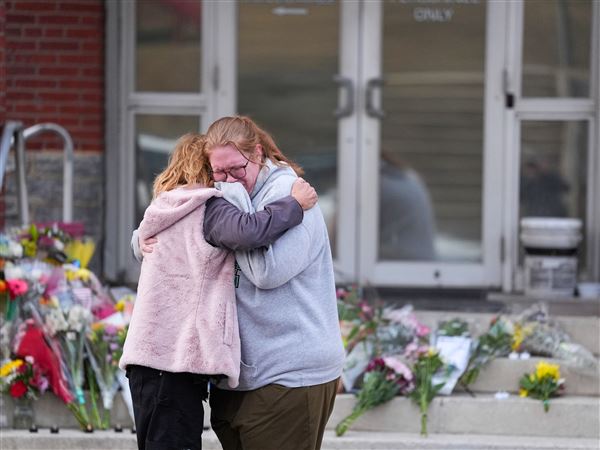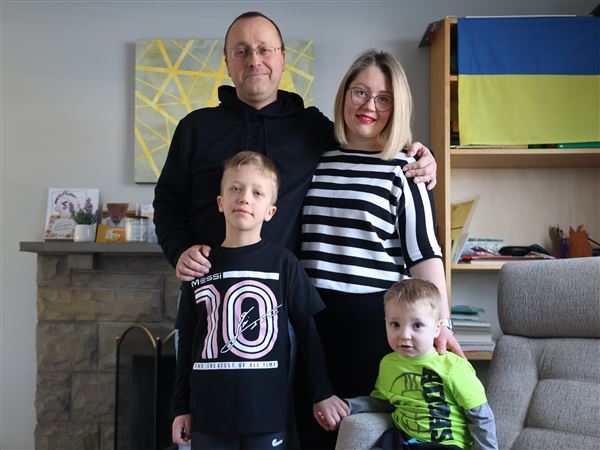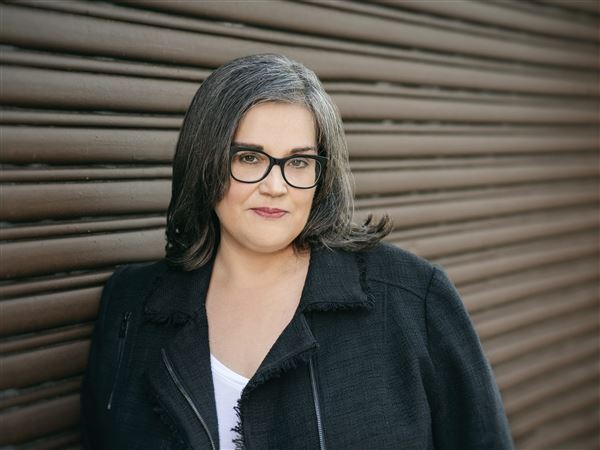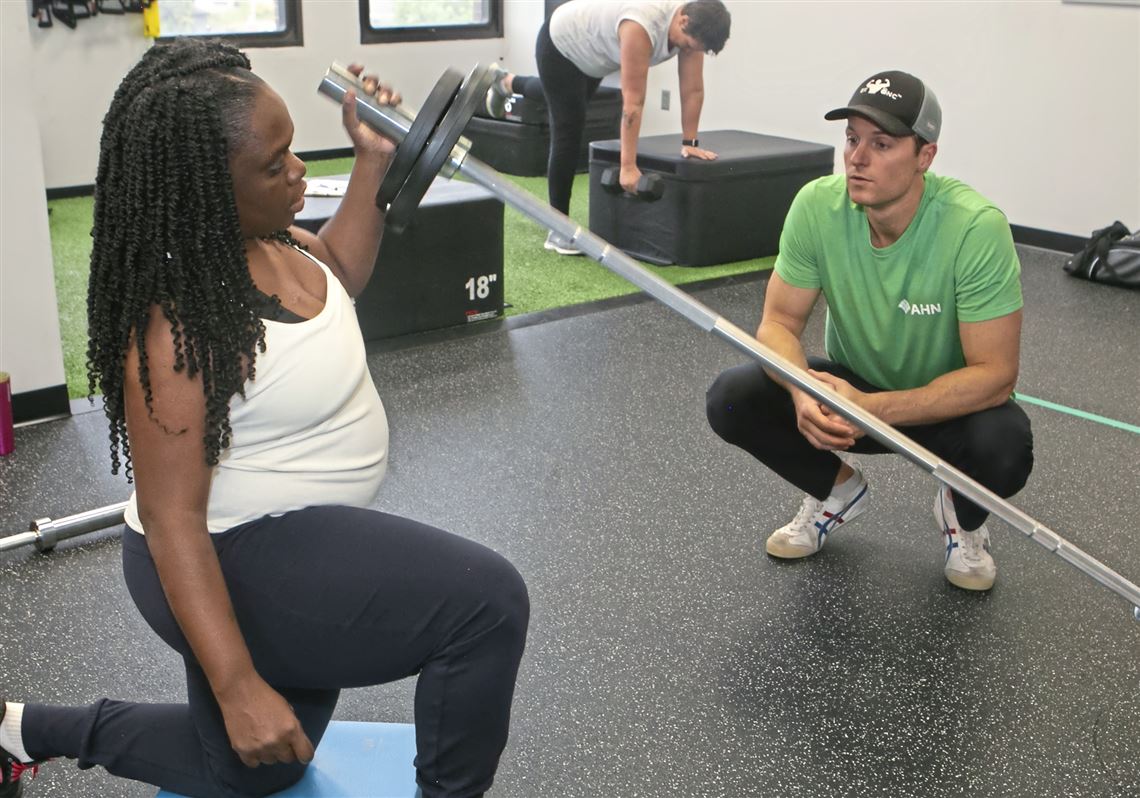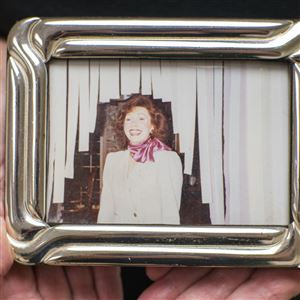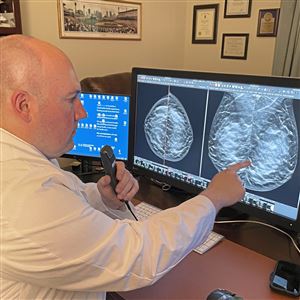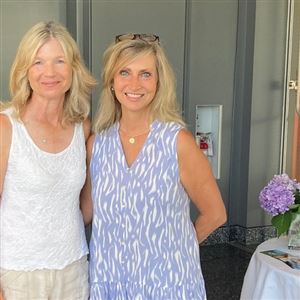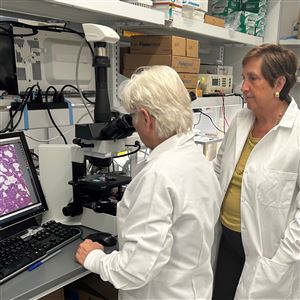Carol Wiltse couldn’t get up from the floor without using a chair to support her. After a three-month exercise program at Allegheny General Hospital Suburban, she can deadlift 150 pounds.
Wiltse, 56, of Beaver Falls, was diagnosed with stage 3 breast cancer in 2006 and, in 2018, stage 4. Over 17 years, she’s undergone three surgeries, eight rounds of chemotherapy, six weeks of radiation and five years of taking the estrogen modulating drug Tamoxifen. But upon her breast cancer’s return, and the discovery that it had spread to her bones, she tried one thing she hadn’t before: an exercise regimen specifically for cancer patients.
That exercise improves physical and mental wellbeing isn’t new, and research showing it’s safe for cancer patients goes back decades too. But personalized care, slow, progressive weightlifting, and regimens that modify exercises for patients at all points of their experiences with cancer encompass tenets of a burgeoning field called exercise oncology that Pittsburgh is heralding at its largest hospital systems.
Cancer weakens the body and tampers with the immune system, leaching calcium from bones, degrading muscles and making patients more prone to debilitating falls and injuries. Exercise for cancer patients has been shown to improve muscle mass, fatigue, depression, quality of life and bone density, thereby increasing a patient’s chances not only for recovery, but also for a happy life post-treatment.
It might seem counterintuitive to push cancer patients to work out post-surgery or even during chemotherapy treatments, but studies back it up.
“It turns out we are meant to be in motion until we expire,” said Kathryn Schmitz, a professor of hematology and oncology at Pitt School of Medicine, the past president of the American College of Sports Medicine and the founder of UPMC Hillman Cancer Center’s exercise oncology program, dubbed Moving Through Cancer. “There is a robust evidence base that people with cancer should be active.”
Two studies by Schmitz, one published in 2009 in the New England Journal of Medicine, the other in 2010 in JAMA, led to the creation of a nationally adopted physical therapy program, Strength After Breast Cancer. She also helped compile the Exercise is Medicine database, which tracks exercise oncology programs and news around the world and is overseen by the ACSM.
The studies, which measured, for one year, both women with breast cancer-related lymphedema and those at risk for lymphedema, employed a progressive weightlifting regimen starting with 1-pound weights.
Lymphedema is caused by a lack of drainage in the lymphatic system and leads to tissue swelling. The condition is common, occurring in about 20% of breast cancer survivors and, by some measures, with an incidence as high as 65%. Sentinel lymph nodes can be removed to determine if breast cancer has spread, while tumors can block the flow of lymph fluid, and radiation can inflame lymph nodes or vessels, sometimes leading to the condition.
Lifting weights per the protocol had positive results for participants in both studies. Those with breast cancer-related lymphedema saw fewer flare-ups, and reported fewer arm and hand symptoms compared to control groups, pointing to the protective effect of careful resistance training on lymphedema. Those at risk of lymphedema were less likely to experience an onset. In both studies, which were funded by various grants, including from the National Cancer Institute, participants also gained strength.
Prior to these studies, breast cancer survivors were told not to lift anything heavy again in their lifetimes, which could include babies, laundry baskets or groceries, daily tasks people without cancer might otherwise not think about.
“The results of the trial were extremely important because they set women free,” Schmitz said. Updating these guidelines meant survivors could — and in some cases, should — be lifting weights — as well as their babies and bags of groceries.
Schmitz started the Moving Through Cancer program at UPMC Hillman Cancer Center in Shadyside last October, after she relocated to Pittsburgh from Penn State College of Medicine in Hershey, Pa., and said she saw an opportunity to create something “truly unique.” Moving Through Cancer finds patients undergoing intravenous chemotherapy at Hillman and asks them a series of screening questions based on their symptoms, relationship to exercise and history of falling. If a patient decides to participate, Schmitz and exercise oncology specialist Andrew Chongaway create a personalized exercise plan based on their metrics and abilities.
The team is in talks with UPMC Altoona to establish Moving Through Cancer there, and Schmitz said her goal is to offer the program at as many Hillman-satellite sites as possible.
An 80-year-old who doesn’t exercise at all will receive different recommendations than an 80-year-old who plays tennis three times a week. So the team responds in gradations, such that the tennis player may be encouraged to continue an at-home workout routine, while the non-exerciser would come into the Moving Through Cancer gym at Hillman to receive balance, coordination and strength training.
“We need programs for people at all levels, with all cancers,” she said. The team, which has seen 500 patients in the last six months, gives exercises to patients who struggle to get up from a chair, patients who may be a few months from the end of their lives.
“We are doing our best to connect with as many patients as possible,” said Schmitz. “It’s about trying to get people off their chairs and moving more so that they feel better.”
An added benefit to some exercise oncology programs is the sense of community and camaraderie that accompanies them. At the AGH Suburban site in Bellevue, five to six women all work out together under the supervision of a doctor and a certified strength and conditioning specialist.
The majority of patients are breast cancer survivors, though people with any kind of cancer are welcome, so long as they are eligible based on an extensive screening intake involving muscle and body mass measurements. Participants work out three times a week.
Everyone in the program is part of a long-term study conducted by Colin Champ, a radiation oncologist at AHN and the founder of the exercise program at the Bellevue site, with participation lasting three months. So far, he has data from 120 people since the program began in September 2022.
Wiltse, the past patient, said this contributed mightily to her improved quality of life.
“A lot of times, you can be with a group of friends, and they just don’t get it,” she said. “There, everyone gets it. It’s almost unspoken. I have friends through the program that I’ll probably never lose touch with.”
Wiltse gained nearly 4 pounds of muscle mass and now prioritizes movement in a way she didn’t before exercise oncology. She has a spare room in her home with a yoga mat, a stationary bike and some weights.
“If it hasn’t done anything for me physically, mentally, it’s put me at a higher level,” she said. “That holds a high importance for me.”
Champ, a Kennedy Township native, strives for that personal connection in the gym. He arrived at AHN in August 2022.
Additional locations within the AHN system, including AGH on the North Side, offer oncology rehabilitation programs as well.
“For most of these people, I’m their physician. On Tuesday, I’m seeing them in the clinic, and the next day, I’m smack-talking them to work out,” Champ, a Pittsburgh native, joked. “And it’s Pittsburgh, so half the people in class know each other or went to high school with someone’s sister.”
Champ’s program makes some modifications, acknowledging that if someone is undergoing chemotherapy or radiation, they may be experiencing symptoms like nausea and fatigue when they arrive at the Bellevue gym. What he calls a “red-light workout” means 15 minutes of movement he can scale up. “Everyone is squatting; it just depends on how,” he said.
The important part to Champ is that the patients’ bones are stressed: There’s evidence to show this recruits cells to the bone site that destroy damaged cells and help create new bone tissue. The end goal is to increase bone density to decrease fall risk, and to increase muscle mass.
“This is looking at exercise as a prescription literally given by their physician,” he said.
Increasing bone density was especially important for Mary Radacosky, 62, of Ross Township. She was diagnosed with estrogen-positive breast cancer last year, so she takes a medication that blocks her estrogen, which can also age the bones more quickly. Throughout her three-month stint, she gained 3½ pounds of muscle mass and is now on a dragon boating team.
Radacosky agreed with Wiltse that half the fun was connecting with others.
“I feel like that study gave me a great outlet to meet other people in other situations and to improve my physical and mental health,” she said. “It was working out as well as connecting with other thrivers.”
Hanna Webster: hwebster@post-gazette.com
First Published: October 21, 2023, 9:30 a.m.
Updated: October 22, 2023, 3:18 a.m.

